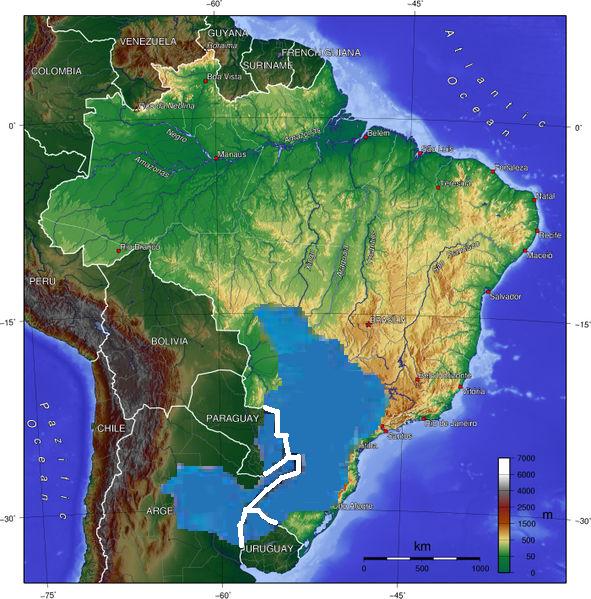#guarani_aquifer

Guarani Aquifer
The Guarani Aquifer, located beneath the surface of Argentina, Brazil, Paraguay, and Uruguay, is the second largest known aquifer system in the world and is an important source of fresh water. Named after the Guarani people, it covers 1,200,000 square kilometres (460,000 sq mi), with a volume of about 40,000 cubic kilometres (9,600 cu mi), a thickness of between 50 metres (160 ft) and 800 metres (2,600 ft) and a maximum depth of about 1,800 metres (5,900 ft). It is estimated to contain about 37,000 cubic kilometres (8,900 cu mi) of water, with a total recharge rate of about 166 km3/year from precipitation. It is said that this vast underground reservoir could supply fresh drinking water to the world for 200 years. However, at closer inspection, if the world population were to stay at an equilibrium of about 6.96 billion, not even taking into account that babies need less water than grown adults, this figure reaches 1600 years, allowing about 9 liters per day per person. Due to an expected shortage of fresh water on a global scale, which environmentalists suggest will become critical in under 20 years, this important natural resource is rapidly becoming politicised, and its control becomes ever more controversial.
Tue 14th
Provided by Wikipedia
This keyword could refer to multiple things. Here are some suggestions: